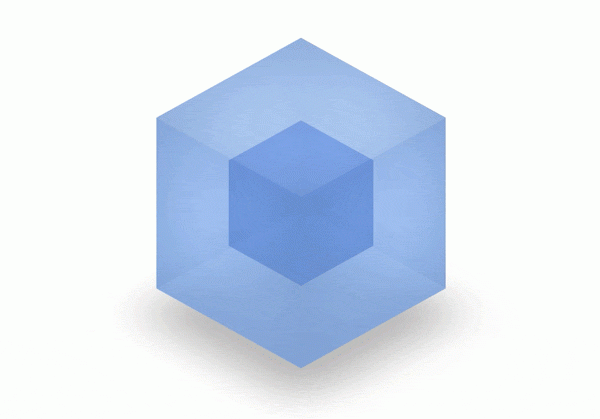How to Be a Lazy (and Smart) Developer
An Introduction to build tools
Is your machine ready to go?
- Node.js and npm installed Please ask if you aren't sure! Node 6+ please!
- Your favorite text editor ready to go
What we're learning today
- Scaffolding
- Old school build tooling (make)
- Dependency management with npm
- JS build tools: gulp and webpack
What do build tools help us do?
Let's Read This.What do build tools help us do?
Developers write software to make their lives easier
Scaffolding: Starting new projects
We use scaffolding tools (such as "rails new" or the create-react-app project) to quickly get a project started, or to see how a project works with all the pieces together
Although useful, scaffolding can constrain you to someone else's way of thinking. Critically analyze any scaffolding system you use for suitability!Exercise
We're going to try out Yeoman a scaffolding tool for webapps
$ npm install -g yoNow, run yo from your terminal. What happens? Now, try running one of the many generator options!
$ mkdir [directory name]
$ cd [directory name]
$ yo [choose a generator]
Build Tool Basics
- Run complex series of tasks with simple commands
- Check your code for common problems
- Automatically run when a file changes
- Host a local server to help development (eg Ajax requests)
Makefile
- Initially used for compiling C programs
- Can be used for any command-line tasks
- Everything we do later with a build script (ex. gulp, npm scripts) you can do with make!
- Pre-installed Mac/Linux
Makefile sample
all: clean build
clean:
rm -rf foo
build:
mkdir foo && cd foo && touch index.html
Each word with a colon can be run as a command with make. "all" is what runs by default.
What makes Make cool and revolutionary as build tooling is it's smart: it does the minimum amount of work necessary based on what changed. In our simple example, this won't happen, but for compiling, it's A+
Dependency management

Programming nowadays is putting blocks together well. Dependency management is how we make sure we get the blocks we meant to, every time.
npm - Node Package Manager
"npm is the package manager for JavaScript and the world’s largest software registry" - npmjs.com
Yarn is an alternative to npm, and many of the commands map. It's fast and has some strong benefits.
Create a new directory and run "npm init"
package.json
{
"name": "intro-to-build-tools",
"version": "1.0.0",
"description": "",
"main": "index.js",
"scripts": {
"test": "echo \"Error: no test specified\" && exit 1"
},
"author": "GDI Philly",
"license": "MIT"
}
Adding dependencies
Use npm to install a package AND save it to our dependencies!
$ npm install --save dinosaur-fetcherExercise
- Install the dinosaur fetcher module in your node project
- Create index.js and fill it in with the code below
const dino = require('dinosaur-fetcher');
console.log(dino.random());Scripts?? Let's scripts!!
The "scripts" section of package.json can be any word, and you can run with "npm run [word]"
Some words have default behaviors, such as "start" and "install", and npm has lots of details on that.
Edit package.json to look like:
"scripts": {
"test": "echo \"No tests yet!\"",
"start": "node index.js"
},And run "npm start"
For a challenge, use a new word (ex. "build") and have it run any bash command! Don't forget "npm run"!JavaScript Build Tools!
We'll talk about two today:
- Gulp
- Webpack
Gulp

Pass files through the processes that need to occur. How do you make a car on the assembly line?
Exercise
- Install gulp as a dependency using npm
- Create a "gulpfile.js" file in the project we used with npm
- BONUS: Add a "script" task to run gulp (will demo in front)
- BONUS: Where is gulp in package.json if you install as a developer dependency (-D vs. -S)?
var gulp = require('gulp');
gulp.task('default', function() {
gulp.src('./*.js')
.pipe(gulp.dest('dist'));
});All about Gulp
- What's a task?
- What's source?
- What's pipe?
Useful things!
- Linters - ESLint
- Compilers - Babel, compression, etc.
- Sourcemaps
- Watch
Webpack
Webpack is a module bundler for web applications.

Webpack: Simple
Webpack is smart. It understands lots of module definitions (CommonJS, AMD, ES 6 modules, etc.) and puts things together
More Webpack: Loaders & Plugins
Loaders are how webpack understands files - how you can 'require()' a CSS file, or an image file, even!
Plugins perform actions on "compilations" or "chunks" of bundled code, vs. on a per file basis like a loader
Exercise
Let's make a basic webpack configuration!
Work through this article here
WTF Webpack?
https://medium.com/@polakallen/wtf-is-webpack-b45460a49457
Making Sense of All the Frontend Build Tools
Article Here
Frontend Masters
Webpack Course